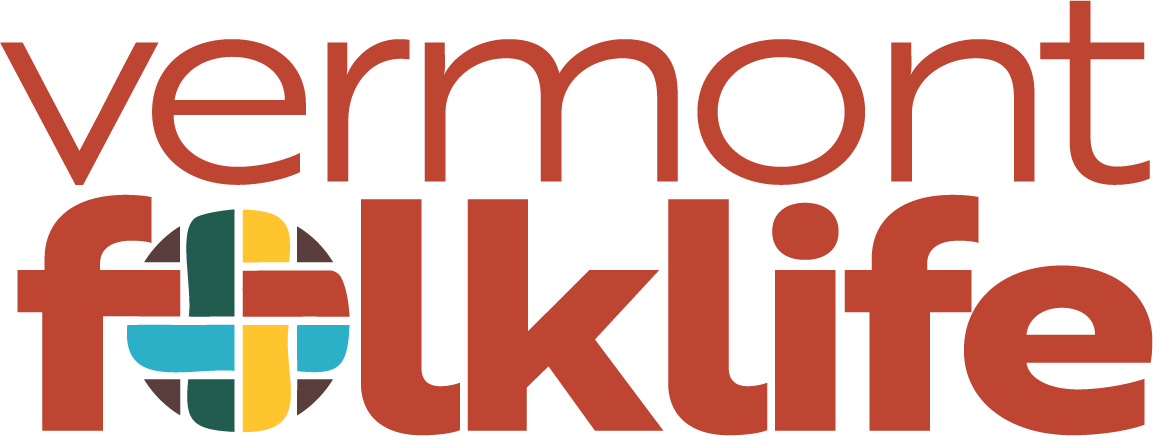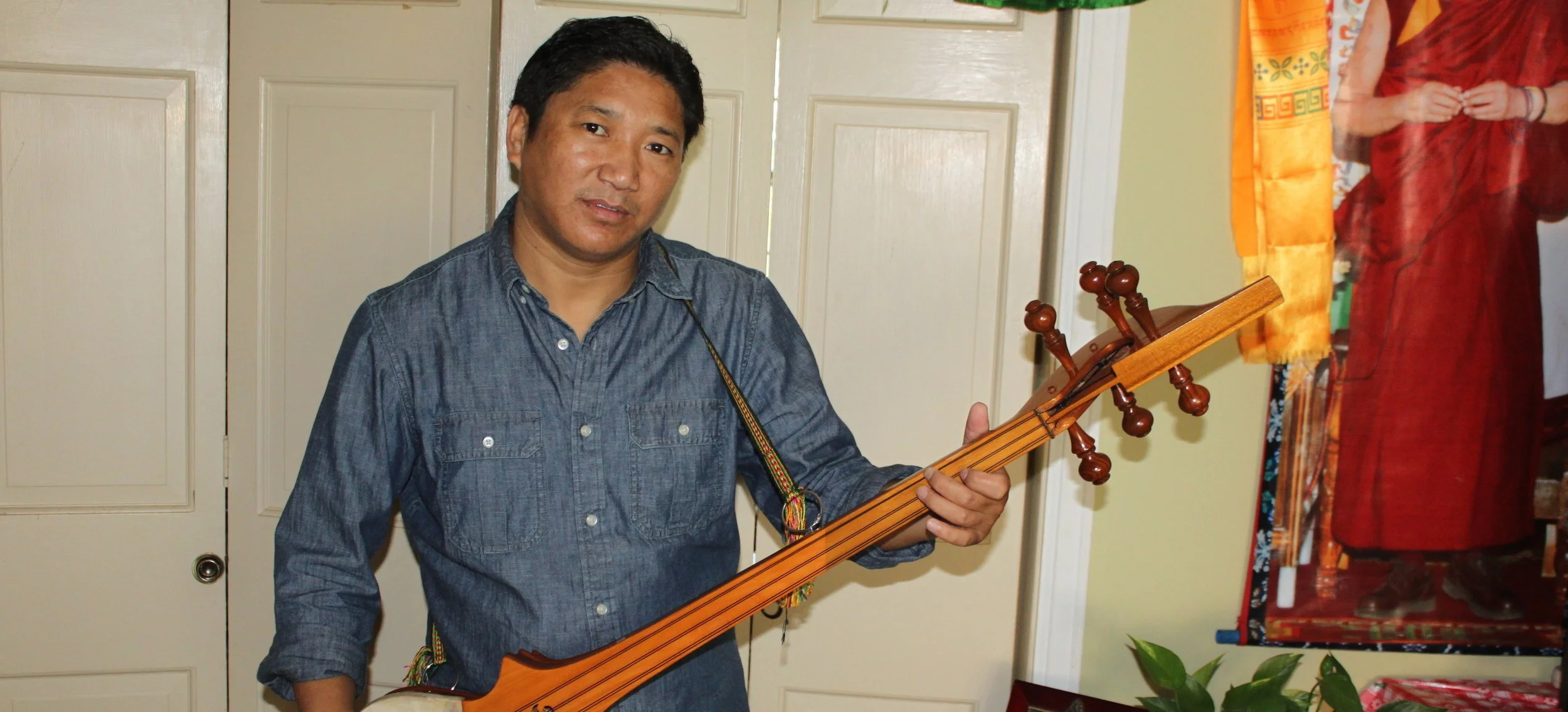The New Neighbors Project is an ongoing documentary project by the Vermont Folklife Center exploring the rich and diverse musical traditions of Vermont’s New American communities.
HERE, WE SHOWCASE AND SHARE A GROWING COLLECTION OF MUSIC RECORDINGS AND INTERVIEWS, BACKGROUND INFORMATION ABOUT NEW AMERICAN COMMUNITIES IN VERMONT, AND LESSON PLANS AND CLASSROOM RESOURCES TO GET THESE MATERIALS INTO THE MINDS OF YOUNG PEOPLE.
Overview
The New Neighbors Music Project began as an effort to record New American singers and musicians who had recently been resettled in Vermont. Our objective was to create a documentary resource that makes the rich and diverse musical traditions of Vermont’s New American communities available, through online access, to both a large public audience as well as within the communities themselves.
Building on this resource, Elizabeth Nolan of Edmunds Middle School in Burlington, VT has developed a curriculum—one that will continue to expand over time. The New Neighbors curriculum guides students in developing the ability to engage and appreciate new and unfamiliar musical traditions. It also creates opportunities for students to share music that has played a formative role in their own lives— through parents, extended families, mentors, home cultures—as well as the music they most love now and the music they would like to create.
About the Author
Elizabeth Nolan is a music teacher in Burlington, Vermont and the author of the New Neighbors Music Project curriculum.
“When I was fifteen years old, I went to a conference in Washington state where I had the great privilege of participating in a week long ‘power singing’ workshop with song leader and ethnomusicologist Nick Page. Nick introduced our rag-tag group of apathetic Unitarian teens (this was 1990) to a world of folk music that pulled at our heartstrings and united us in the solidarity of song. This was the seed that eventually developed into my career as a music educator. My passion for world music and the power of music to communicate across cultures was born in that week and has continued to develop as I have taught for sixteen years in Chittenden County, Vermont.
I studied music at Keene State College in New Hampshire where I had great experiences performing with everything from a Collegium Musicum that specialized in Medieval and Renaissance vocal music to a Latin American music ensemble. I began my career teaching elementary music but soon found my niche as a middle level choral and general music teacher, first at Colchester Middle School, then at Browns River in Jericho, VT and currently, for the past nine years, at Edmunds Middle School in Burlington. My transition to the Burlington School system was greatly due to the diverse demographics in the city. I was excited about the opportunity to work with refugee students from different corners of the world and use music as a level playing field for exploring cultural differences and similarities.
When I was approached by the Vermont Folklife Center to help develop curriculum to utilize the vast library of music they were recording from our new American communities, I jumped at the chance. The challenge was to create an interdisciplinary unit of study that utilized the musical resources while creating space for students to explore different aspects of culture and identity. I wanted every student to feel that their personal story is rich in culture and value. The depth of emotional and cultural content in the music samples created a variety of access points for students at different developmental levels. Elementary, middle, and high school students can find connections to this music both in its musical elements and its content and function in society. The ability for students to practice discussing music beyond their personal emotional reactions lays the groundwork for students to begin to share their personal cultural experiences through the lens of music in a safe and accepting environment.
Nick Page’s power songs launched me on my current path of personal and cultural exploration when I was an emerging adult. I hope that humanities and music teachers alike will find this curriculum useful as a tool for students to begin the lifelong journey of developing understanding and acceptance of one’s own culture and the cultures of the world.”
– Elizabeth Nolan
Project Credits
Partner Organizations
Diversity Rocks
Somali Bantu Community Organization of Vermont
Tibetan Association of Vermont
Association of Africans Living in Vermont
Bosnia and Herzegovina Family and Youth Association
Recordist/Producer: Mark Greenberg
Curriculum Writer: Betsy Nolan
Project Advisors
Simeon Chapin
Anthony Seeger
Web Development
Ned Castle
Andy Kolovos
Justin Purdue
Mary Wesley
Contributing Musicians:
Halidzja
Mohamed Abdi
Yohanna Adenti
Omima Agnethe
Chol Atem
Manivanh Bolavong
Mohammed Ibrahim Bulle
Neville La Costa
Josué Dimina
Osman Hassan
Cornelius Hayles
Noel Hines
True Tender Htun
Jamaican chorus
Paw Kbo
Pete Keny
Isaac Kuek
Kham Lay
Jordan & Joel Mensah
Tensin Mingyur
Omar Mohammed
Mike Monthong
Ramiz Mujkanovic
Xuan Nguyen & Loan Nguyen
Aline Niyonzima
Abraham Owalich
Izet Pasegic
Souphine and Phady Phathsoungneune
Gabriel Poth
Emanuel Riby-Williams
Mohammed Somo
Migmar Tsering
Kevin Wang
Lisa Yasner & Hong Yo Yasner
With support from the Folk and Traditional Arts Program at the National Endowment for the Arts, the Innovations and Collaborations Grant program at the Vermont Community Foundation, and the Vermont Arts Council
Culture Groups
Explore the history and cultural heritage of Vermonters who have immigrated, been resettled as refugees, or who arrived as migrant agricultural workers.
Musical Resources
Explore the history and cultural heritage of Vermonters who have immigrated, been resettled as refugees, or who arrived as migrant agricultural workers.
Lesson Plans
Welcome to the New Neighbors Project Curriculum. This series of lessons explores the connections between music and identity by using the musics of a wide variety of refugee communities living in Vermont. These musical examples serve as a vehicle to engage students in a series of discussions not only about music but also about identity.
The goal is to give students tools to listen to and describe music without personal judgement and then look beyond the differences to see how people from all parts of the world use music in similar ways to find connections with others and develop their own sense of cultural and personal identity.
The curriculum was developed with middle and high school music teachers in mind but may also be easily adapted for use in elementary school classrooms and is also very well suited for integration with social studies classes. Below is specific information about using the curriculum in these settings.
– Elizabeth Nolan, curriculum writer























